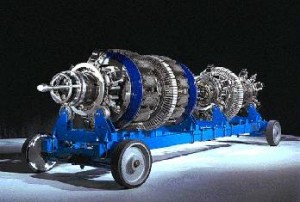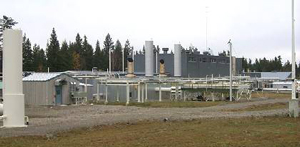42" Transmission Pipes
Larger than Keystone (36")
m
Source: Duke Energy Gas Transmission Canada
"Mainline transmission pipes, the principle pipeline
in a given system, are usually
between 16 and 48 inches in diameter."
Lateral pipelines, which deliver natural gas
are typically between 6 and 16 inches in diameter.
Most major interstate pipelines are between
24 and 36 inches in diameter"
Transmission pipes can measure anywhere from 6 to 48 inches in diameter, depending on their function. Certain component pipe sections can even
consist of small diameter pipe, as small as 0.5 inches in diameter.
However, this small diameter pipe is usually used only in gathering and distribution systems. Mainline transmission pipes, the principle pipeline in a given system, are usually between 16 and 48 inches in diameter. Lateral pipelines, which deliver natural gas to or from the mainline, are typically between 6 and 16 inches in diameter.
Most major interstate pipelines are between 24 and 36 inches in diameter.
The actual pipeline itself, commonly called ‘line pipe’, consists of a strong carbon steel material, engineered to meet standards set by the American Petroleum Institute (API). In contrast, some distribution pipe is made of highly advanced plastic, because of the need for flexibility, versatility and the ease of replacement. Transmission pipelines are produced in steel mills, which are sometimes specialized to produce only pipeline.
There are two different production techniques, one for small diameter pipes and one for large diameter pipes. For large diameter pipes, from 20 to 42 inches in diameter, the pipes are produced from sheets of metal which are folded into a tube shape, with the ends welded together to form a pipe section. Small diameter pipe, on the other hand, can be produced seamlessly. This involves heating a metal bar to very high temperatures, then punching a hole through the middle of the bar to produce a hollow tube. In either case, the pipe is tested before being shipped from the steel mill, to ensure that it can meet the pressure and strength standards for transporting natural gas.
Line pipe is also covered with a specialized coating to ensure that it does not corrode once placed in the ground. The purpose of the coating is to protect the pipe from moisture, which causes corrosion and rusting. There are a number of different coating techniques. In the past, pipelines were coated with specialized coal tar enamel. Today, pipes are often protected with what is known as a fusion bond epoxy, which gives the pipe a noticeable light blue color. In addition, cathodic protection is often used; which is a technique of running an electric current through the pipe to ward off corrosion and rusting
Source: Natural Gas - Transport - Transmission Pipes


